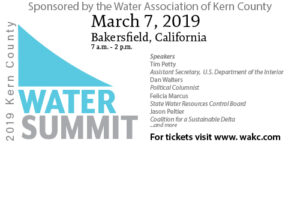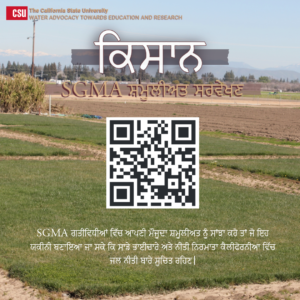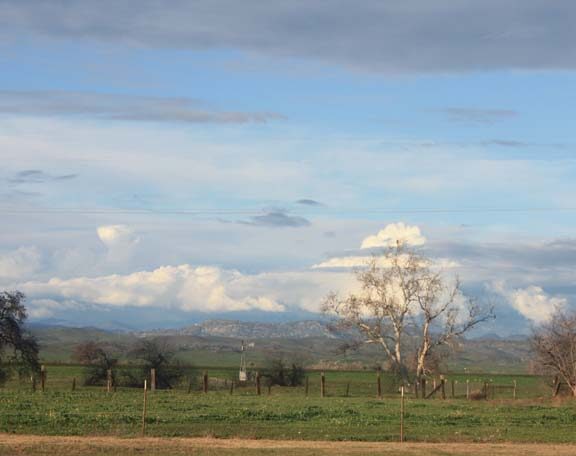The Tulare Irrigation District held its board of directors meeting on Tuesday, February 20, 2024 at its headquarters west of the City of Tulare and on Zoom. I like Zoom. It’s so much easier for non-techies to use. However, this morning I wasn’t able to unmute myself and verbally give my input to the proceedings. I had a lot of trouble with my security ap and web browser so who knows where the problem lies. Somehow the Tulare board was able to soldier on. Also, Director Mike Thomas was present. Hope he is well, haven’t heard different.
and verbally give my input to the proceedings. I had a lot of trouble with my security ap and web browser so who knows where the problem lies. Somehow the Tulare board was able to soldier on. Also, Director Mike Thomas was present. Hope he is well, haven’t heard different.
The Meeting
The meeting was called to order by President Dave Bixler at 9:00am and the first action was to add a grant application to the agenda. General Manager Aaron Fukuda explained the deadline is so close they can’t wait until next month. There was no problem with this. The minutes were approved without comment.
Water Report
Water Master Marco Crenshaw gave the water report saying things are in a fluid state. Not really, he used other words but I felt like going for the easy pun. Crenshaw said there was a small flood release as it would be better to take down the Lake Kaweah level and build up the storage. I believe this allows TID and others with storage to prepare for scheduling carryover.
Carryover is water in storage that wasn’t used the year before. It is always an important subject. A great deal of money is tied up in water, billions to be clear. If this water is “trapped” in carryover and not made available to contractors it can be a hard hit financially. This happens when storage space for flood control is encroached and the old carryover water has to be released.
Crenshaw said the plan as of today is to hold on to as much carryover in Millerton Lake on the San Joaquin River as TID can. Fukuda said the US Bureau of Reclamation has a much more complicated flood release diagram. Unlike the Kaweah River there are reservoirs upstream from Millerton. He also said the storm that came through yesterday dropped a great deal of snow on the Sierra Nevada but it wasn’t a uniform blanket. Some areas were hit harder than others but those locations are not yet known for certain.
Fukuda dropped a bummer on me. He said when the sun was shining the mountains looked like they were cloaked in snow. It has been exceptionally clear between storms and the view of the mountains has been nothing short of glorious. Fukuda said when the clouds came over and the reflection off the snow subsided it didn’t look that thick at all. As much as I respect Fukuda, I want to wait for the next ASO flight.
Crenshaw showed a graph of the atmospheric rivers over the Pacific and the way things are going Southern California is receiving the brunt of the moisture.
O&M Report
Wayne Fox, Superintendent gave the Operations & Maintenance report saying in between the rain crews have been able to get a good deal of work completed so the system is able to deliver. On the wet days they have been able to get a good deal of maintenance completed on the district’s equipment. Also, on wet days the crew was able to do some in house fabrication for things like handrails and such.
between the rain crews have been able to get a good deal of work completed so the system is able to deliver. On the wet days they have been able to get a good deal of maintenance completed on the district’s equipment. Also, on wet days the crew was able to do some in house fabrication for things like handrails and such.
Fox said they are building a spray truck. As I recall TID and Fox have a history of building innovative equipment they can’t find on the market. He said this spray truck will allow crews to reach hard to get to spaces.
Treasurer’s Report
Fukuda said Kathi Artis isn’t feeling well today and he’ll give the report. He said fortunately there has not been much in the financing sector due to this being the first part of the year. If I understood TID is budgeted to spend close to $7 million on water this year.
fortunately there has not been much in the financing sector due to this being the first part of the year. If I understood TID is budgeted to spend close to $7 million on water this year.
What is usually my favorite part of the financial report is the payment of the bills. Everybody gets quiet and reads. Usually. This time the cost of replacing a fan blade on a rental tractor was more than $1,500 and that elicited a response.
The tragedy was a cat was taking a nap on the engine to stay warm. The damage report stated both the fan assembly and the cat were destroyed. You may have heard of such a thing.
I’ve seen this happen since I was a child. Cats go where it’s warm. When I was young a neighbor in San Joaquin had just such an unpleasant hitch inserted in his morning commute. God bless the beasts and the children.
While everyone was sad the cat died Director Dave Martin commented it sounded like a lot of money to replace a fan. After it was revealed parts were $500 and the rest was labor Martin said next time he’ll fix it for half that price. If he’s not available I’ll do it for half price. Eventually the financial report was approved.
price. Eventually the financial report was approved.
Engineering Report
The report was given by Fukuda who said the AREA 21 pipeline replacement plan has finally been approved. Area 21 makes it sound like a secrete alien base was discovered underground in TID pipelines at the DR Horton subdivision in the City of Tulare.
The housing contractors stumbled upon a pipeline they hadn’t probably taken account of. It got a bit complicated and Provost & Pritchard was called in. As of last Friday the plans were approved.
Another pipeline on Hillman Street required moving a TID pipeline. The developers put forth a substandard set of plans that didn’t include anything more than the location of the new trench. TID has got Borges Irrigation on board and things are improving. At least a turnout and connection are now included.
SGMA
Fukuda said he spent Valentines Day with the State Board staff discussing well mitigation, ground levels and subsidence in the Kaweah Subbasin. He said State Board staff was engaged and prepared with questions and even offered some direction.
Unfortunately a scheduling problem limited the time available to discuss subsidence. Staff suggested an additional meeting focused on subsidence, which was a good thing. Fukuda said the State Board staff was much more prepared than in the past. He said a revised Groundwater Sustainability Plan is scheduled to be delivered to the State Board in July of this year.
There is still a good chance notices for a November probationary hearing will be sent out to growers as under probation the relationship shifts from between the State Board and Groundwater Sustainability Agencies to State Board and landowners.
There are four meetings a week between the three GSAs in Kaweah – Mid Kaweah, East Kaweah and Greater Kaweah GSA. Intera Engineering (contracted with East Kaweah) is involved in the subbasin coordination and Fukuda said they are doing an excellent job.
In fact such a good job the other two GSAs are looking to help pay for Intera to do other subbasin wide work. Fukuda didn’t say Kait Palys name but I think that’s who he was talking about. Good for them.
Mid Kaweah GSA
Next Fukuda updated the board on the Mid Kaweah GSA. He said the East Kaweah is looking for less flexibility and MKGSA is looking for a bigger buffer. The MKGSA February meeting was cancelled and a workshop followed by a meeting will be held next month. Last year’s invoices were late so instead of sending out last year’s and this year’s invoices separately they will be sent together. That way the recipients won’t think they’re getting duplicate bills and throw one away. Not a bad idea.
separately they will be sent together. That way the recipients won’t think they’re getting duplicate bills and throw one away. Not a bad idea.
Friant Stuff
Fukuda said the Friant team and contractors have completed all the dewatering projects and the Friant Kern Canal is up and running. He had a lot of praise for the Friant folks for this accomplishment.
Fukuda also attended the Mid Pacific Water Users Conference in Reno. He said he had good meetings throughout. One notable discussion was backing off from the Phase Two repairs on the FKC until the subsidence situation is dealt with. Phase Two is the repair needed up and down the full length of the canal.
As of today there hasn’t been much new news about Friant and Arvin Edison WSD’s lawsuit against the Eastern Tule GSA. Fukuda said he heard a presentation at the World Ag Expo about land values in the San Joaquin Valley. He said Arvin’s projected values are trending down and that impacts the income that district can spend on FKC repairs. There is a disagreement on how much and when Easter Tule is supposed to pay Friant for subsidence damage on the FKC.
down and that impacts the income that district can spend on FKC repairs. There is a disagreement on how much and when Easter Tule is supposed to pay Friant for subsidence damage on the FKC.
Director Rick Borges went to Washington DC with Fukuda and Friant earlier this month. Borges said most of the congressional and other folks they spoke with knew the situation taking place in the Central Valley Project. The Exchange Contractors were also in DC at the same time and they continually ran into each other in the hallways and cafeterias.
Seaborn Reservoir
Congressmen David Valadao and Jim Costa are helping get some seed money together to get the Seaborn Reservoir up and running which will open other funding opportunities. Fukuda said Austin Ewell was on the Washington DC trip.
GM Report
Fukuda recently spoke at a Planning & Conservation League panel on water, recharge and water rights. Fukuda warned everyone since according to the P&CL the old white men are abusing the water rights system and the P&CL and many others are coming after you. He said there was a legislator not scheduled to be on the panel but was able to get himself on the panel somehow. He wasn’t friendly and he wasn’t named by Fukuda.
said there was a legislator not scheduled to be on the panel but was able to get himself on the panel somehow. He wasn’t friendly and he wasn’t named by Fukuda.
Martin said all four of his grandparents came to America from a volcanic rock in the Atlantic Ocean by ship and made their way across North America by train to California packing everything in trunks. How does that make him an evil white grower? I’ve written about and had conversations about this subject many times. What is being put forth is blatant racism based on Marxism having failed as an economic theory and switching to dividing us by identity.
The Planning & Conservation League is not a friend to ag or property rights. There are 17 board members*: nine white women (53 percent), six white men (35 percent), one Hispanic female (5.8 percent) and one Hispanic male (also 5.8 percent). Five of them self-identify as attorneys (29 percent.) Twelve of them list post graduate degrees (70percent) but it is reasonable to believe all of them have at least a Bachelor’s degree (100 percent.)
Hispanic female (5.8 percent) and one Hispanic male (also 5.8 percent). Five of them self-identify as attorneys (29 percent.) Twelve of them list post graduate degrees (70percent) but it is reasonable to believe all of them have at least a Bachelor’s degree (100 percent.)
The US Census Bureau lists California’s population as of July 1, 2023 as 39,040,616. Women count for 49.9 percent. Whites alone count for 34.7 percent, and Hispanic or Latinos count for 40.3 percent. The percentage of Californians with a Bachelor or higher post graduate degrees is 35.9 percent. Let’s ignore the absence of black, Asian or Native Americans and just look at the percentage of whites on the P&CL board. It’s 88 percent white. At the same time the population of the San Joaquin Valley is estimated to be 80 percent Hispanic or Latino.
These are the folks who testify before legislative committees. One (a post graduate degree holding white woman) is Executive Director of the Center on Race, Poverty & the Environment. Another (also a post graduate degree holding white woman) is the co-founder, co-director and legal director of the Leadership Counsel for Justice & Accountability. You’d be hard pressed to find two NGOs more hostile to agriculture and the people of the San Joaquin Valley.
The P&CL wrote a slate of 11 laws that have been either passed or consistently entered into the process. Most of last year’s attacks on water and property rights came from some version of that organization’s efforts. It has achieved influence far beyond its economic reach. According to GuideStar its IRS form 990EZ shows a 2021 income of $40,889 and expenses of $18,060. They can do this. The Planning & Conservation League isn’t breaking any law or violating any right. They are organized and I believe dangerous.
reach. According to GuideStar its IRS form 990EZ shows a 2021 income of $40,889 and expenses of $18,060. They can do this. The Planning & Conservation League isn’t breaking any law or violating any right. They are organized and I believe dangerous.
So, what do we do? Sit around and whine about the mean NGOs? That hasn’t worked. Ag could try engaging with them, but that takes a willingness on both sides to cooperate. That well already has poisonous fumes emanating from it.
Farmers have to take time to travel to Sacramento (or at the very least take time to write) and express their positions on pending bills and regulatory measures. And while we’re at it – existing bills and regulatory measures. Notice I wrote farmers. Not water districts or ag friendly NGOs but the actual citizen with the most to lose. Water and Irrigation Districts are special districts, part of the State of California. They can only do so much. Commodity groups, ag organizations and the Farm Bureau can help but it is the farmers who need to speak up.
I once interviewed Wade Crowfoot, California’s Secretary for Natural Resources. He told me when the teachers’ union finds out it isn’t getting the legislative results it wants you’ll find hundreds of people wearing matching t-shirts swarming the capital and holding rallies. He said when there is a bill impacting growers maybe one or two show up. Maybe one or two farm workers show up.
me when the teachers’ union finds out it isn’t getting the legislative results it wants you’ll find hundreds of people wearing matching t-shirts swarming the capital and holding rallies. He said when there is a bill impacting growers maybe one or two show up. Maybe one or two farm workers show up.
Have you heard this? Has your organization kept you informed? Have you as a grower been involved? Listen, you don’t have to be a prophet to know there are already plans for you and if you don’t speak up they will give you what they want and you won’t like it. I know it’s cliché but if you’re not at the table you’re on it.
And on that note: TID is developing a District Water Portal to help staff and growers with a management tool to keep folks aware of water tracking, groundwater levels, crop surveys and O&M requests. Fukuda said Four Creeks Engineering has a prototype available. There is some grant money from the Bureau that could go to this effort. He said the longer the district waits the more the data piles up.
Action Items/McKay Point EIR
Next a lot of folks joined the meeting for a review of the McKay Point Reservoir and getting the Environmental Impact Report through the goal posts. Fukuda said this project has been going on for many years, even before the previous manager Paul Hendrix came on board.
TID is the lead agency on the McKay Point project. The project is located near where the St. Johns River enters the Valley floor near Woodlake. The project creates new surface water storage, flood control and can take water from the Friant Kern Canal. This also ties in with improved SGMA response.
St. Johns River enters the Valley floor near Woodlake. The project creates new surface water storage, flood control and can take water from the Friant Kern Canal. This also ties in with improved SGMA response.
The project has three phases: excavation, construction and operations.
Phase One is the heavy excavation. West Coast Sand & Gravel have joined the effort from an RFP it was awarded. Digging should commence this year and continue over the next 20-years. The materials removed can be sold and part of the proceeds will go to paying for the cost of the project.
Phase Two is reservoir construction and should be finished by 2040. The bottom will reach a rock bed.
Phase Three is reservoir operations of the 4,600 a/f with a 500 cfs from the Kaweah /river. There will be 160 cfs to control structures and a 900 cfs emergency turnout back into the Kaweah River if needed.
This EIR began in 2012, was reconfigured in 2021 and coordinated development with Tulare County. Fukuda said the County was very helpful and the final review came in 2023.
SESPE Consulting’s Grahm Stevens has been working on this EIR for a couple of years now. I believe he and his firm wrote the actual EIR. The final draft will be released in a few weeks. Stevens gave the board an overview.
Stevens said the California Environmental Quality Act is meant to inform the public and governmental decision makers. There were scoping meetings and public comment hearings conducted. At least 20 different impacts were evaluated, from aesthetics to wildfires. Of those 20 no impacts or less than significant impacts were identified. Another five potentially significant impacts were found.
Mitigation measures reduced the impacts to less than significant. Cultural resources will be an ongoing investigation as you never know when you’ll dig up a dinosaur or ancient civilization’s burial ground. Or maybe an idol with a multi-million-dollar jewel embedded in its booby trapped forehead. Obviously another job for Director Martin.
There are other hoops that must be jumped through, many dealing with public outreach and the shepherding of public comments. You can submit comments to gstephens@sespe.com
Someone said attorney Alex Peltzer and Stephens have been working on this since they were children. Peltzer said the location has had attention surrounding mining. He said the district and the County decided to go ahead and get a permit although it is a water project and not a mining project. Just to be safe and cover things. I believe Peltzer said as of March 1st a 45-day comment period will begin, followed by a public hearing.
district and the County decided to go ahead and get a permit although it is a water project and not a mining project. Just to be safe and cover things. I believe Peltzer said as of March 1st a 45-day comment period will begin, followed by a public hearing.
There are riparian and forest land on the property and it is supposed to be a nice part of the planet. These areas will be preserved. Peltzer said originally the plan was to let everything fill up with water but that would have been a much different EIR. Also, if I understood, he said the McKay and Seaborn sites, while close, are different projects with different EIRs. At about 11:24am the good folks in the boardroom approved going forward.
different EIRs. At about 11:24am the good folks in the boardroom approved going forward.
The next item dealt with Stantec extending its water marketing contract. It’s all well within budget and the board approved.
An item called District Vacation Accrual Temporary Program has been hanging out for a while. Fukuda said the wet year prohibited at least four folks to take 70-80 hours still on the books. If they can’t take it until June it will be lost. This is actually an extension of the available time use deadline. At it turns out three of the four are Fukuda, Fox and Crenshaw. Actually it sounded to me like Fukuda is going to lose it anyway but the board approved.
The item added earlier was a grant request from the USBR and the board approved the application.
Directors Reports & Closed Session
This is the portion of our meeting where the directors report on what they have been up to. Borges reported he attended the St. Johns River Association. The meeting then went into closed session at 11:30am. Pretty good considering I’ve had to bow out at noon more than once. Well, that’s that from Tulare. Go be good to each other and yourselves. Thanks for reading.
DISCLAIMER OF RESPONSIBILITY; Waterwrights strives to provide clients with the most complete, up-to-date, and accurate information available. Nevertheless, Waterwrights does not serve as a guarantor of the accuracy or completeness of the information provided, and specifically disclaims any and all responsibility for information that is not accurate, up-to-date, or complete. Waterwrights’ clients therefore rely on the accuracy, completeness and timeliness of information from Waterwrights entirely at their own risk. The opinions expressed in this report are those of the author and do not represent any advertisers or third parties.
*Judging by information on the P&CL website, the same way the DWR determined the race and sex of water agency boards across the state.
ALL RIGHTS RESERVED. Copyright 2024 by WaterWrights.net/DAW
TULARE IRRIGATION DISTRICT
6826 Ave 240, Tulare, CA 93274 Office: 559/686-3425
Board: David G. Bixler- President, Richard S. Borges, Jr.-Vice President, Scott Rogers, Dave Martin & Michael Thomas
Staff: Aaron Fukuda-General Manager, Kathi Artis–District Controller, Wayne Fox–Superintendent, Marco Crenshaw–District Watermaster & Alex Peltzer-Attorney.
About: The Tulare Irrigation District was organized September 21, 1889. The original proposal for the formation of an irrigation district covering 219,000 acres, extending from the Sierra Nevada foothills to Tulare Lake, was eventually reduced to 32,500 acres. The District continued in this status until January of 1948 when the so-called Kaweah Lands” (approximately 11,000 acres) were annexed. In October of 1948, approximately 31,000 acres, compromising the area served by the Packwood Canal Company were annexed to the District. A U.S. Bureau of Reclamation contract was signed in 1950 providing an annual supply of 30,000 acre-feet of Class 1 water, and up to 141,000 acre-feet of Class 2 water from the Friant-Kern Canal. The District and the Kaweah Delta Water Conservation District have coordinated efforts to enhance the recharge of groundwater within the Kaweah Basin. During high flow times KDWCD may use the recharge basins with the District for recharge purposes. Further, KDWCD has historically provided for a financial incentive program through which the District sustains the level of groundwater recharge from supply sources into the District. This historical program was recently reinstated by both districts in lieu of the District’s plans to concrete-line this canal to conserve the surface water. TID is a member of the Mid Kaweah GSA DWR#-5-022.11































